Reclaim the Earth
15 Apr - 04 Sep 2022
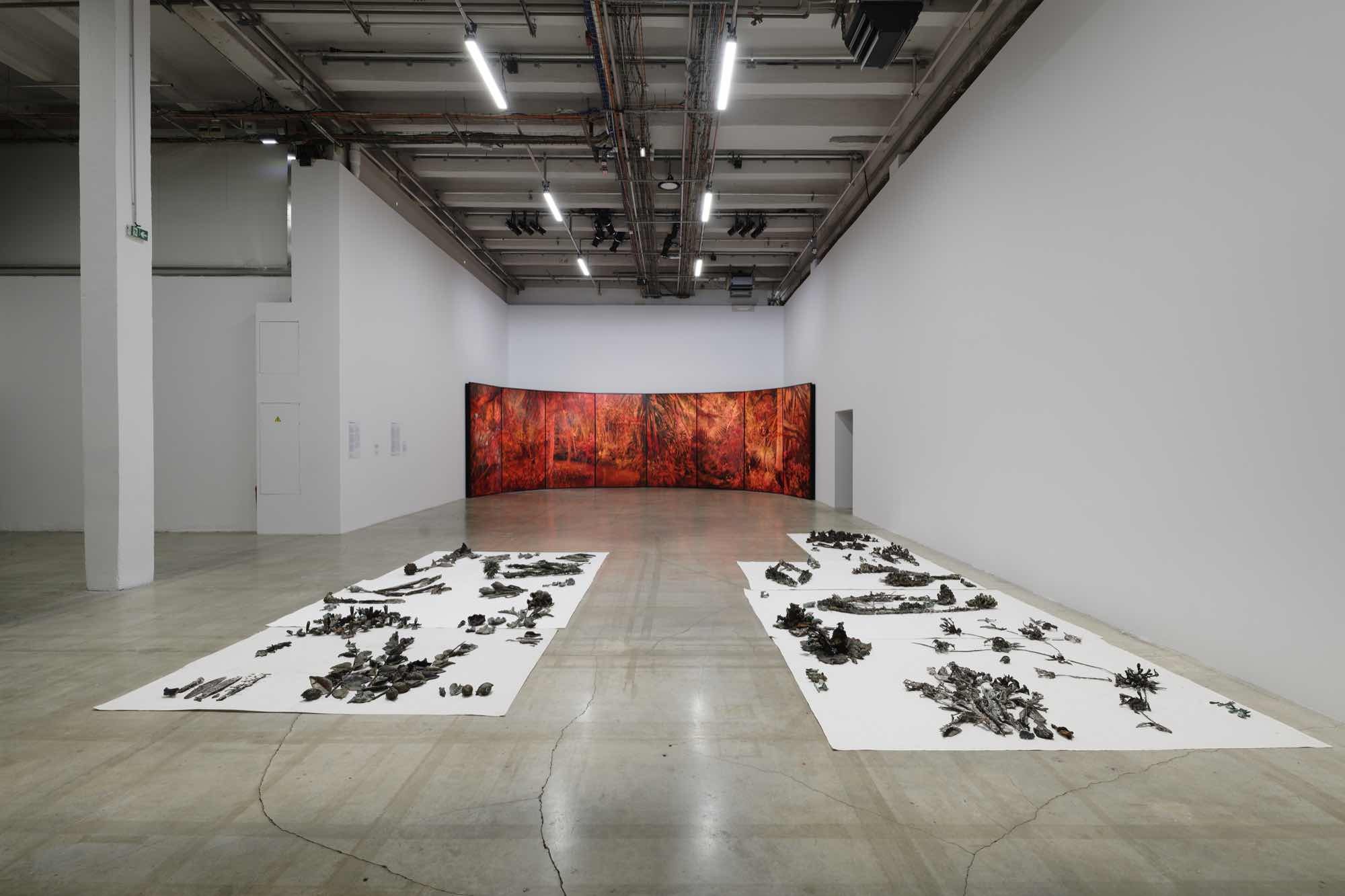
Abbas Akhavan, Cast bronze, white cotton sheets
Art Jameel Collection (Dubai)
Family Servais Collection (Brussels)
Courtesy of the artist, Catriona Jeffries (Vancouver) & The Third Line (Dubai)
Photo credit: Aurélien Mole
Art Jameel Collection (Dubai)
Family Servais Collection (Brussels)
Courtesy of the artist, Catriona Jeffries (Vancouver) & The Third Line (Dubai)
Photo credit: Aurélien Mole
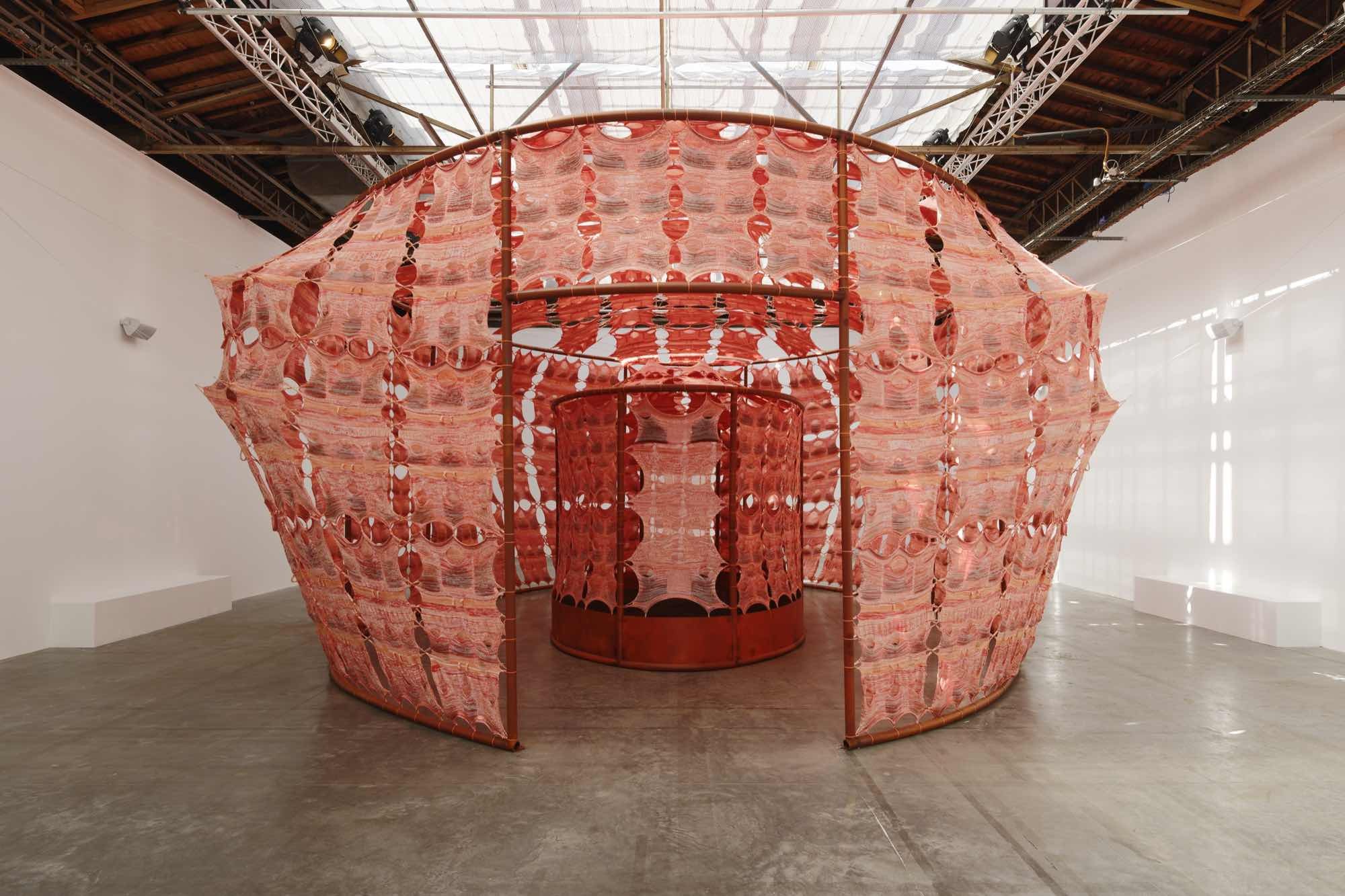
Amabaka x Olaniyi Studio, Nono: Soil Temple, 2022
Soil, metal, stainless steel ropes, fabric (organic cotton, recycled ocean plastic fiber, seaweed fiber)
Courtesy of the artists
Photo credit: Aurélien Mole
Soil, metal, stainless steel ropes, fabric (organic cotton, recycled ocean plastic fiber, seaweed fiber)
Courtesy of the artists
Photo credit: Aurélien Mole
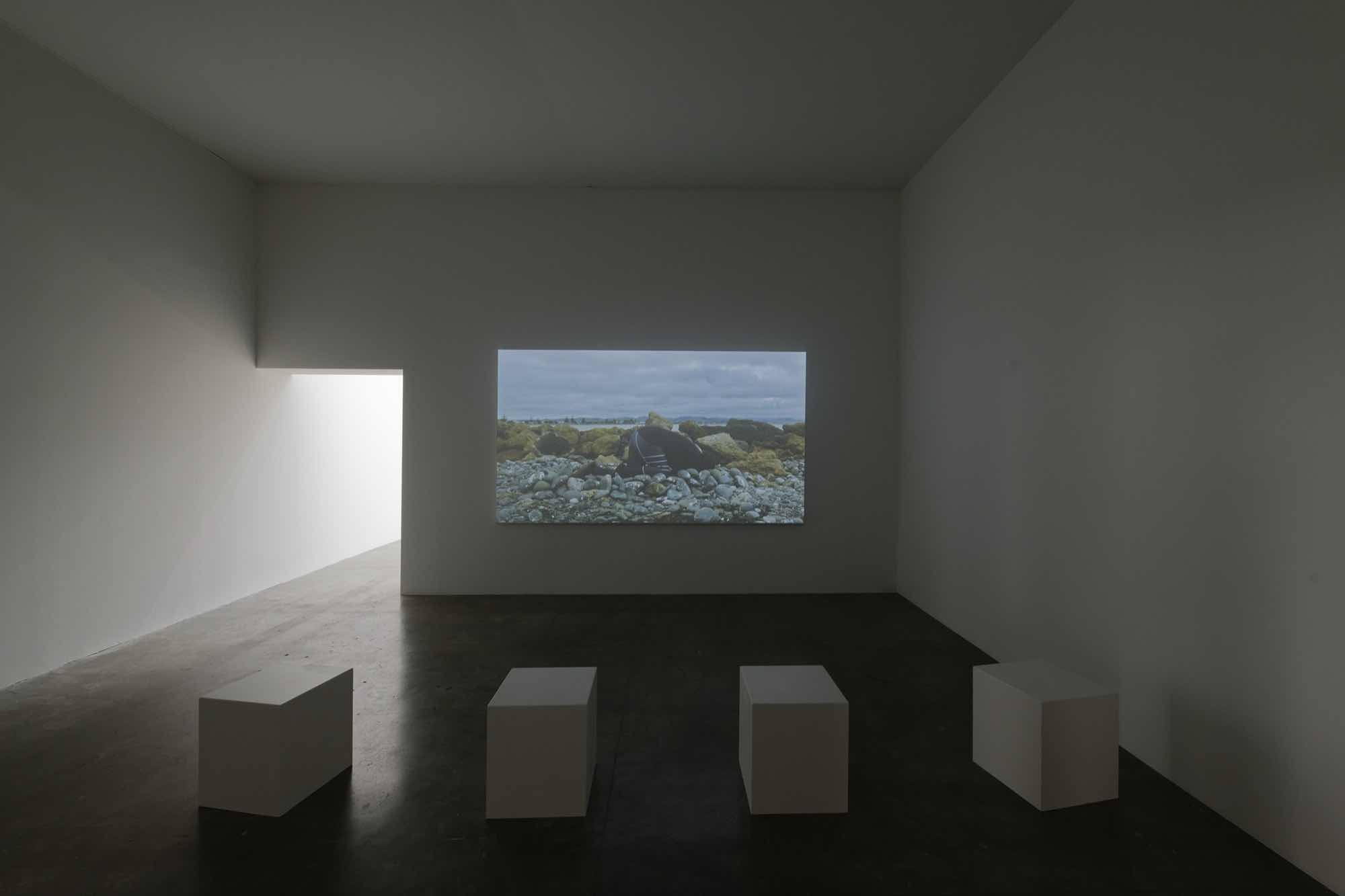
asinnajaq, Rock Piece (Ahuriri edition), 2018
Video, 4’2”
Courtesy of the artist
Photo credit: Aurélien Mole
Video, 4’2”
Courtesy of the artist
Photo credit: Aurélien Mole
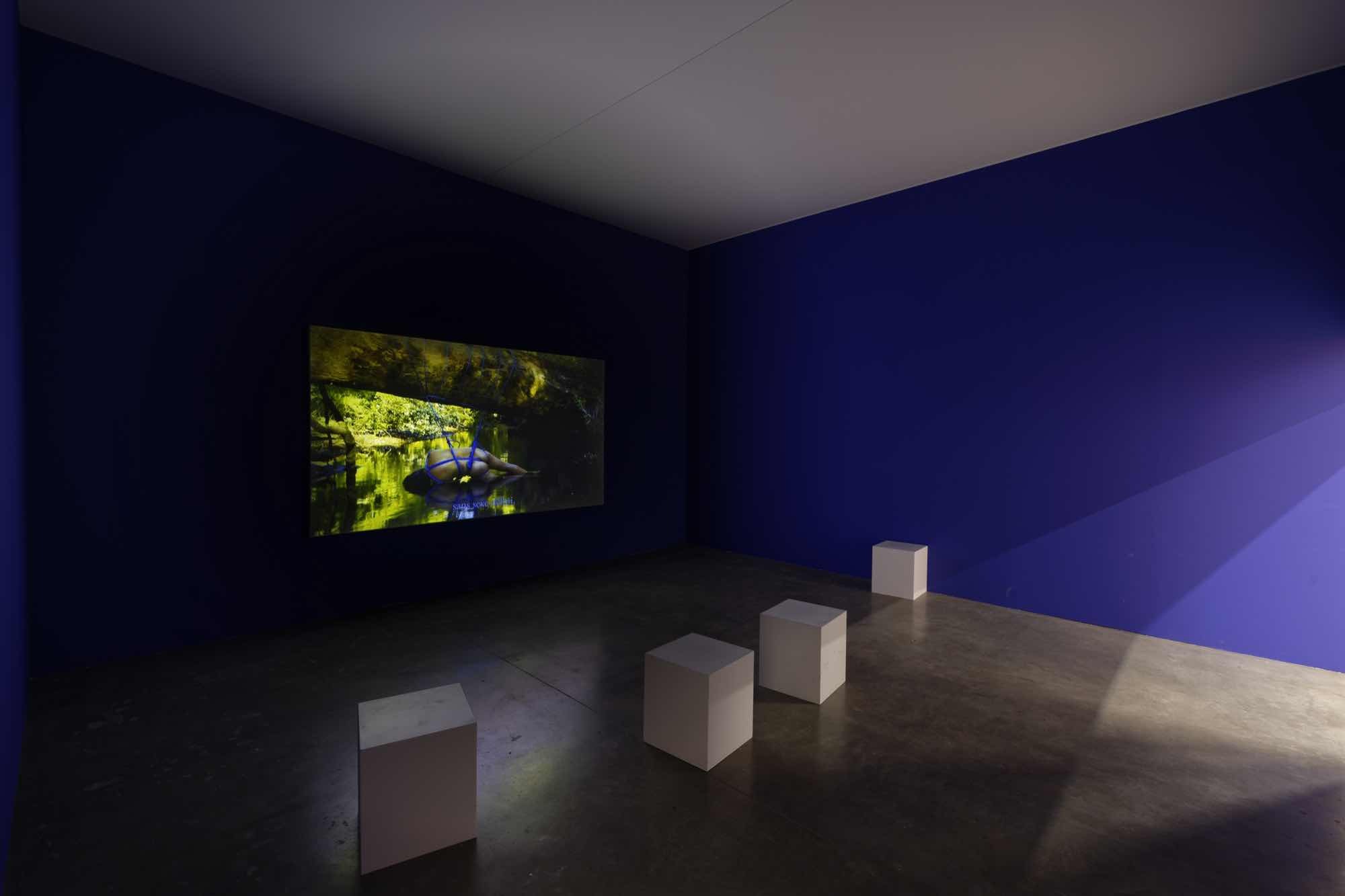
Sebastián Calfuqueo, Kowkülen (Liquid Being), 2020
Video, 3’
Courtesy of the artist & Patricia Ready (Santiago)
Photo credit: Aurélien Mole
Video, 3’
Courtesy of the artist & Patricia Ready (Santiago)
Photo credit: Aurélien Mole
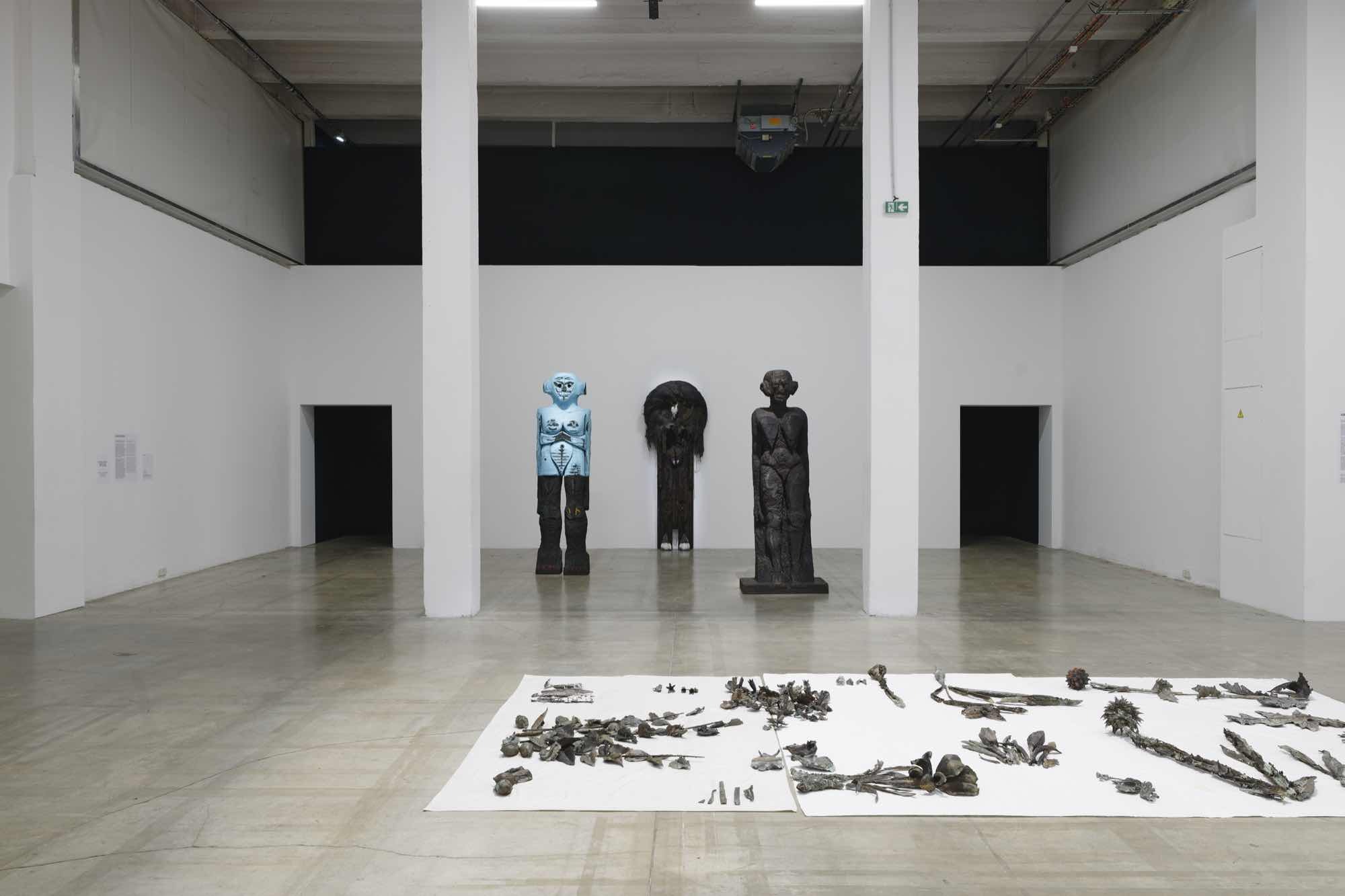
Huma Bhabha, The Past is a Foreign Country, 2019
Wood, cork, Styrof oam, acrylic, oil stick, wire, white - tailed deer skull, tire tread
Courtesy of the artist & Salon 94 (New York)
Photo credit: Aurélien Mole
Wood, cork, Styrof oam, acrylic, oil stick, wire, white - tailed deer skull, tire tread
Courtesy of the artist & Salon 94 (New York)
Photo credit: Aurélien Mole
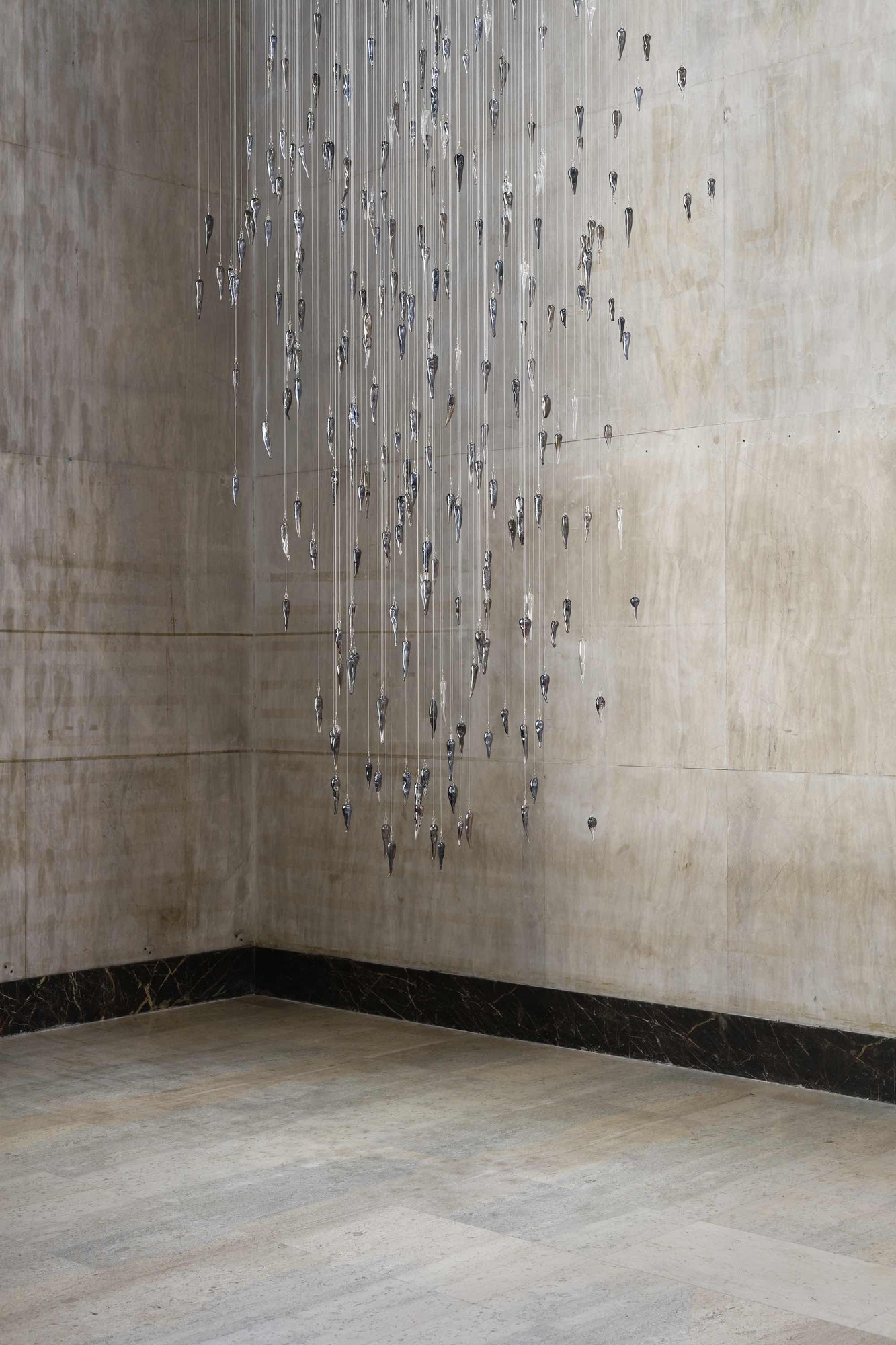
Yhonnie Scarce, Shadow creeper, 2022
Blown glass yams, stainless steel, reinforced wire
Courtesy of the artist & THIS IS NO FANTASY (Melbourne)
Photo credit: Aurélien Mole
Blown glass yams, stainless steel, reinforced wire
Courtesy of the artist & THIS IS NO FANTASY (Melbourne)
Photo credit: Aurélien Mole
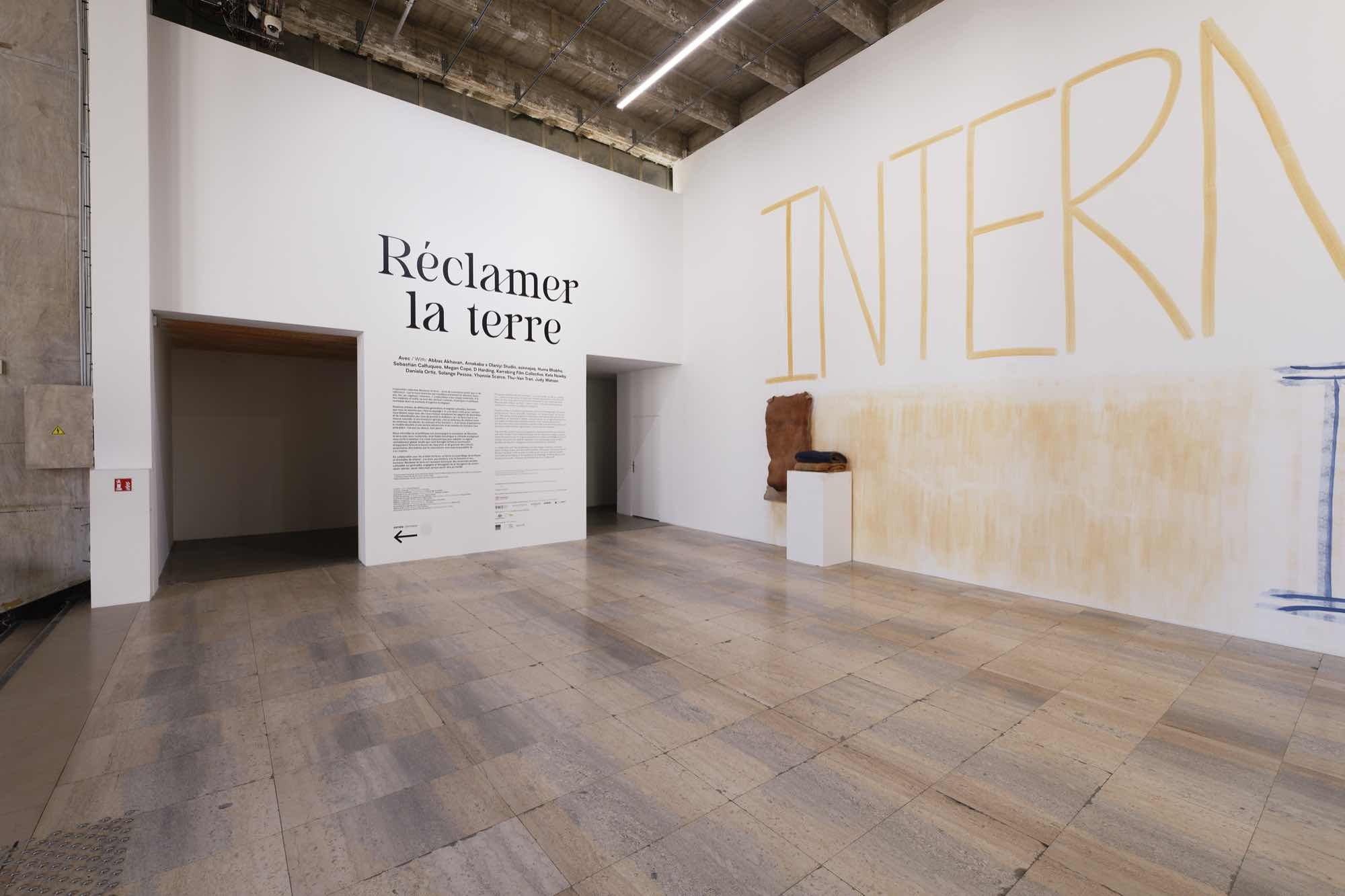
D HARDING, INTERNATIONAL ROCK ART RED©, 2022
Wool felt made with Jan Oliver, red ochre, gum arabicum, hematite
Courtesy of the artist & Milani Gallery (Brisbane)
Photo credit: Aurélien Mole
Wool felt made with Jan Oliver, red ochre, gum arabicum, hematite
Courtesy of the artist & Milani Gallery (Brisbane)
Photo credit: Aurélien Mole
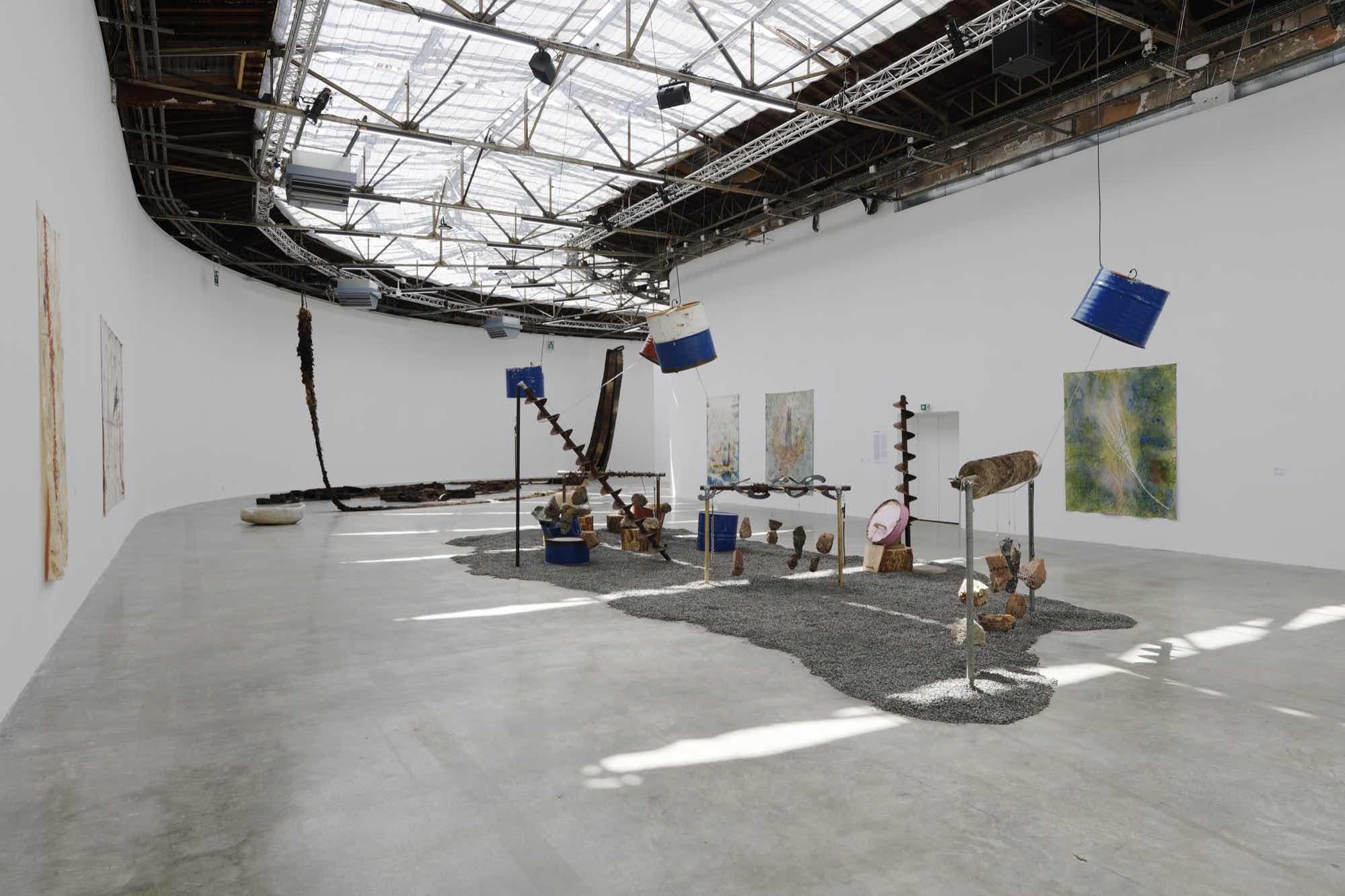
Megan Cope, Untitled (Death Song), 2020
Drills, oil drums, violin, cello, bass, guitar and piano strings, natural debris, iron thread, metal, rocks, gravels
Stereo sound
Acknowledgment: Hoshio Shinohara
Courtesy of the artist & Milani Gallery (Brisbane)
Photo credit: Aurélien Mole
Drills, oil drums, violin, cello, bass, guitar and piano strings, natural debris, iron thread, metal, rocks, gravels
Stereo sound
Acknowledgment: Hoshio Shinohara
Courtesy of the artist & Milani Gallery (Brisbane)
Photo credit: Aurélien Mole

Judy Watson, red spine (bunya) and kangaroo grass, 2022
Graphite, synthetic polymer paint on eco dyed lining
Courtesy of the artist & Milani Gallery (Brisbane)
Photo credit: Aurélien Mole
Graphite, synthetic polymer paint on eco dyed lining
Courtesy of the artist & Milani Gallery (Brisbane)
Photo credit: Aurélien Mole
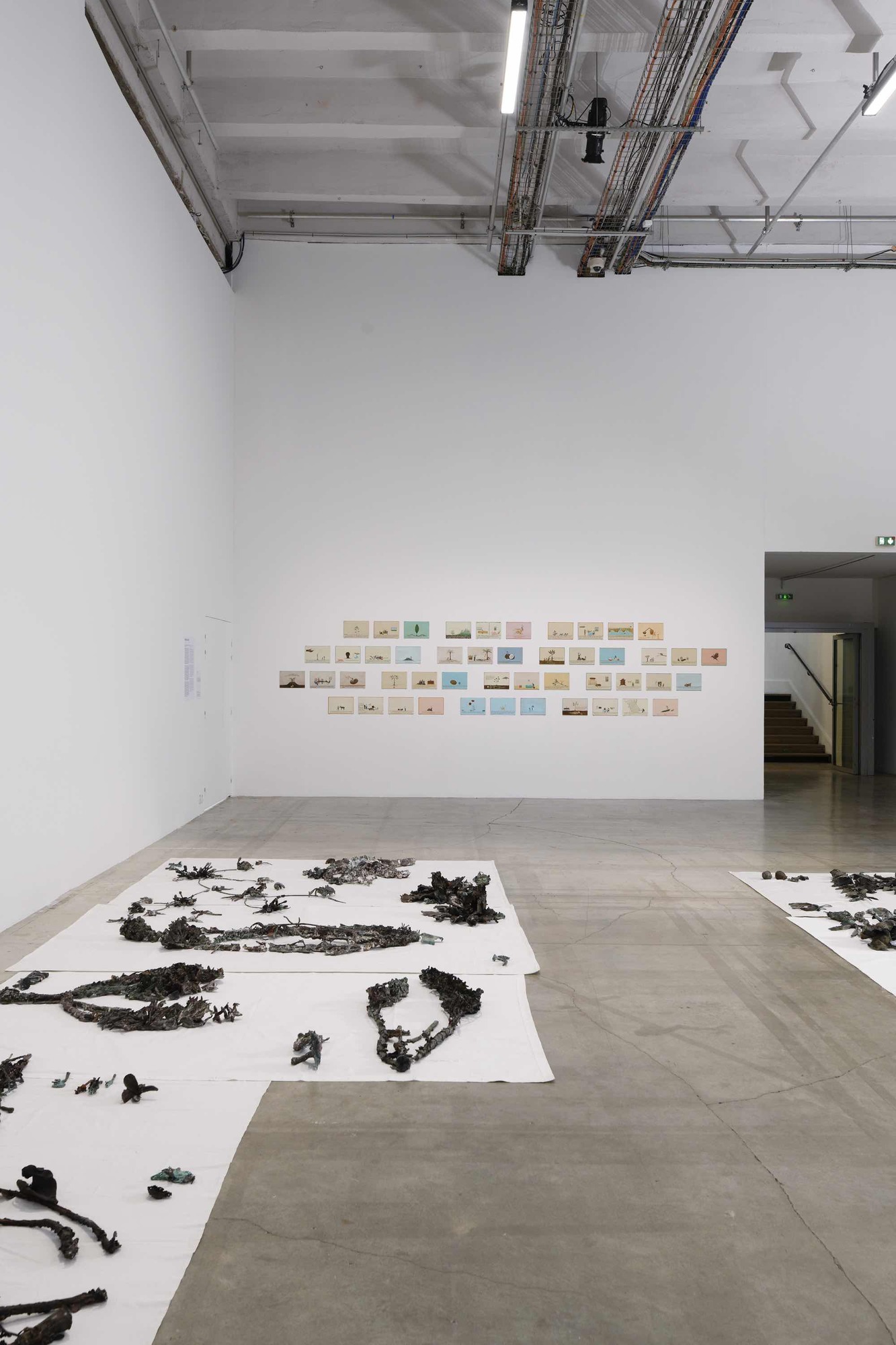
Daniela Ortiz, The Rebellion of the Roots, 2020 – ongoing
Acrylic on wood
Courtesy of the artist & Laveronica Arte Contemporanea (Modica)
Photo credit: Aurélien Mole
Acrylic on wood
Courtesy of the artist & Laveronica Arte Contemporanea (Modica)
Photo credit: Aurélien Mole
Reclaim the Earth is a wake-up call, as much as a rallying cry. The origins of this collective exhibition can be found in an observation by its scientific advisor, Ariel Salleh: “Bringing ecology, feminism, socialism and Indigenous politics together means giving up the Eurocentric lens for a genuinely global one.” In its determination to think the world beyond the Nature-Culture divide, the exhibition follows the trajectories of artists with a different approach to elements – earth, air, fire, water, plants and minerals, irreducible to their mere materiality. They are both medium and tool – cultural, historic and political vectors being revitalised in a context of ecological emergency.
Fourteen artists, from different generations and cultural origins, examine links between body and land, our primordial human relation to soil and everything it nurtures, the disappearance of certain species, the transmission of Indigenous stories and knowledges, gleaning and collecting, or social justice and collective healing. These artists show us that we are not just “face to face with a landscape,” nor “living on Earth” but a part of it. We are indeed part of the great “soil community” as spoken by Rachel Carson, who gave birth to the ecology movement. We need to replace relations of domination and subordination, and to consider instead kinship and alliances, as “the Earth is neither a natural reserve, nor an agricultural resource, it is a skein of relationships between minerals, plants, animals and humans.” Our era needs to leave behind the obsolete model of an extractivist society and put humans back into their right place; no longer individuals separated from their environments, but “relational entities.”
The artists in Reclaim the Earth help us think and feel about a nature that is charged, intensified and active. They rummage the Earth, literally and metaphorically, transforming subterranean roots into aerial ones, foregrounding, even re-inventing, narratives that have been forgotten or reduced to silence. Léuli Eshrāghi, scientific advisor of the exhibition, thus emphasises the need for reparation, care and healing among Indigenous cultures invalidated by colonialism. Drawing away from the Eurocentric vision, the artists imagine new connections with the living environment. Their actions form a complex assemblage of practices, across multiple scales: with land, with ancestors, with human and non-human life, as well as a conversation with visual culture. Of particular concern are Indigenous bonds with territory, but also social, cultural or spiritual conventions, testifying to the decolonial resurgence of knowing ‘how to think’, knowing ‘how to do’, and knowing ‘how to be in the world’.
Curator: Daria de Beauvais
Fourteen artists, from different generations and cultural origins, examine links between body and land, our primordial human relation to soil and everything it nurtures, the disappearance of certain species, the transmission of Indigenous stories and knowledges, gleaning and collecting, or social justice and collective healing. These artists show us that we are not just “face to face with a landscape,” nor “living on Earth” but a part of it. We are indeed part of the great “soil community” as spoken by Rachel Carson, who gave birth to the ecology movement. We need to replace relations of domination and subordination, and to consider instead kinship and alliances, as “the Earth is neither a natural reserve, nor an agricultural resource, it is a skein of relationships between minerals, plants, animals and humans.” Our era needs to leave behind the obsolete model of an extractivist society and put humans back into their right place; no longer individuals separated from their environments, but “relational entities.”
The artists in Reclaim the Earth help us think and feel about a nature that is charged, intensified and active. They rummage the Earth, literally and metaphorically, transforming subterranean roots into aerial ones, foregrounding, even re-inventing, narratives that have been forgotten or reduced to silence. Léuli Eshrāghi, scientific advisor of the exhibition, thus emphasises the need for reparation, care and healing among Indigenous cultures invalidated by colonialism. Drawing away from the Eurocentric vision, the artists imagine new connections with the living environment. Their actions form a complex assemblage of practices, across multiple scales: with land, with ancestors, with human and non-human life, as well as a conversation with visual culture. Of particular concern are Indigenous bonds with territory, but also social, cultural or spiritual conventions, testifying to the decolonial resurgence of knowing ‘how to think’, knowing ‘how to do’, and knowing ‘how to be in the world’.
Curator: Daria de Beauvais
